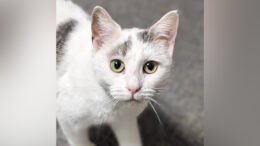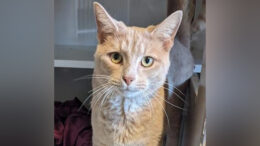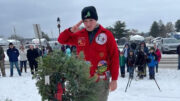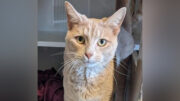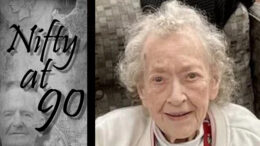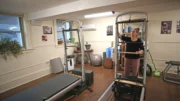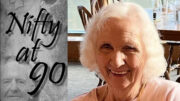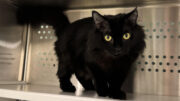After a surge of COVID-19 cases in November and the first two weeks in December, numbers have returned to a more manageable level at UPMC Northwest.
“We have seen a little bit of a pullback on positive cases here over the past two weeks,” UPMC Northwest president Brian Durniok said Tuesday in an interview with the newspaper. “The volume has certainly fallen back, which is a good thing,” he added.
Durniok said the case numbers at the Seneca hospital reflect the trends in the rest of northwest Pennsylvania and western New York.
“What we have seen for the last year is these ebbs and flows of cases,” said Durniok.
He added that “(early in the year) we had a surge of cases. It dissipated in March, then we saw lower numbers while the weather was good, although occasionally we would see a flare up. Then in November we got another wave of cases.”
Durniok said that when the November wave hit, “we were very busy with COVID-positive cases. It just seemed steady. We had a couple of people every day come into the emergency room who tested positive.”
Durniok said COVID tests done at UPMC Northwest don’t analyze what the variant is. Samples of tests are sent away to determine the variant type.
No tests from UPMC Northwest had tested positive for the omicron variant as of Tuesday morning, he said.
“We have not gotten anything back yet, but it is not unrealistic to think it is approaching the area, if it isn’t already here, since it is spreading across the country quickly,” said Durniok.
Durniok said the hospital expects to see an increase in COVID cases because of holiday travel.
Last month’s uptick of traffic at the hospital was due to several contributing factors, said Durniok.
First, there was a higher volume of patients, both from COVID and non-COVID-related health concerns, he said.
“I think there was a hesitation by people to seek out healthcare in the beginning of 2021 because people were still unsure about the virus,” said Durniok.
Whether the concern over COVID has abated or people can’t put off treatment for underlying health issues any longer, more people are seeking medical attention for non-COVID issues, he said.
“Some of the neighboring hospitals are full, so they may not be able to accommodate patients,” Durniok said. “We have people coming from farther and farther away. We are finding that our footprint has expanded as a result of that.”
He said patients are experiencing more severe issues that require more intense care and a longer hospital stay.
“What happens is, your length of stay of a typical patient began to grow, and as that increased and there are minimal options to move people around, then your emergency room gets fuller and the wait time is longer,” Durniok said.
He also noted that about a month ago, when patients were experiencing longer wait times at the hospital emergency room, it was an issue of capacity at UPMC Northwest as well as other neighboring hospitals.
“We try the best we can to balance the load,” said Durniok. “If there is room at other UPMC hospitals, when it is appropriate, we transfer patients if there is a higher medical need. The reality is there is a lot of volume, and we do our best to care for that.”
Another issue for the hospital is that some healthcare workers have been driven away from the field by the stress of the pandemic.
“We have seen some staff who have decided after 22 months in the pandemic to shift gears, to go into another field or retire,” Durniok said. “When volumes surge, and the staff isn’t growing at the same rate, it is hard. It makes the situation very challenging for our caregivers,” he added.
Durniok said that as the number of patients has risen, UPMC Northwest has done its best to meet the need. But staff members aren’t rising at the same rate as the number of patients.
“These things combined put a lot of burden on our staff,” said Durniok. “They day in and day out rise to the challenge and take care of their friends and neighbors. They truly are remarkable.”
The hospital is implementing several strategies to relieve the strain on its staff and bring in more support, said Durniok.
There have been job fairs to recruit more workers, and the hospital has hired traveling nurses and is planning to implement its own internal traveling nurse program in January, he said.
“What we have learned at this point is we just take it one day at a time. If nothing else about this virus, I can say with 100% certainty it is unpredictable… The best thing to do is take each day at a time,” said Durniok.
“I’ve got to give all the credit in the world to our staff,” said Durniok. “This is extremely daunting what they are dealing with… I just can’t say enough about what they do and how great they are and hard-working.”



